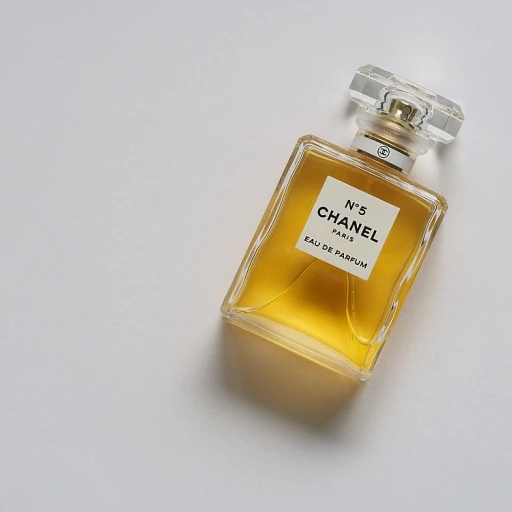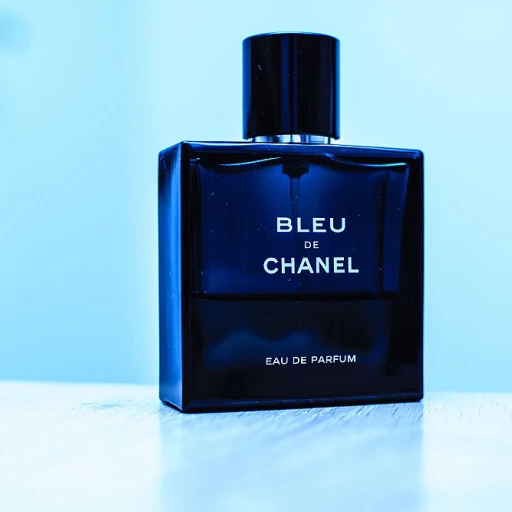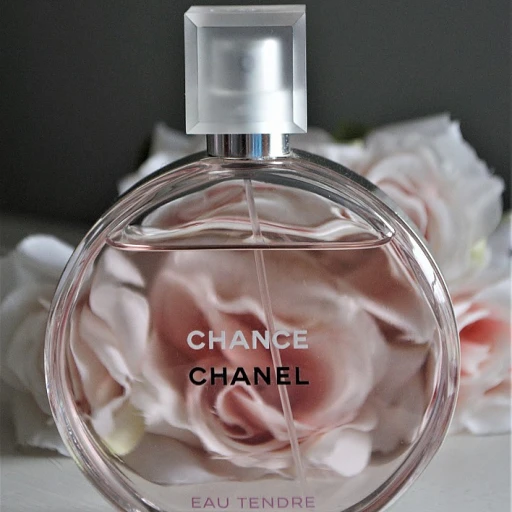
Patchouli perfume history
The origins and evolution of patchouli in perfumery
Tracing back to ancient cultures, patchouli's rich history is as complex as its scent. Originating in the tropical regions of Asia, particularly in Indonesia, Malaysia, and India, patchouli was not only prized for its aroma but also for its medicinal properties. Traditional herbalists have long utilized patchouli to address health issues, from skin conditions to digestive problems. Its deep, earthy fragrance, however, is what catapulted patchouli to Western fame in the 19th century.
With the advent of the silk trade, patchouli leaves were packed with precious fabrics to repel moths, inadvertently infusing the textiles with its distinctive aroma. As these aromatic fabrics reached European shores, the scent became associated with exotic luxury. The 1960s counterculture then embraced patchouli as a symbol of love and peace, propelling its popularity as a personal fragrance. Even in modern perfumery, patchouli remains a staple, revered for its versatility and depth, playing a crucial role in the base notes of many signature scents.
Today, the fragrance industry witnesses a resurgence in the appreciation of classic ingredients like patchouli, with a growing demand for authenticity and olfactory storytelling through scent. The legacy of patchouli, interwoven with global history and culture, continues to evolve, shaping contemporary fragrance trends and preferences.
As we deconstruct the scent profile in the next section, and delve into the nuances of cultivation and extraction later, we'll uncover how the traditional methods of procuring patchouli oil contribute to its unique aromatic signature, and why experts remain fascinated by this timeless ingredient.
Breaking down the scent profile
Understanding patchouli's unique scent characteristics
At the heart of a patchouli perfume is its distinctive scent profile, which sets it apart from other fragrance notes. A member of the mint family, patchouli is known for its rich, earthy, and musky aroma. These characteristics stem from the essential oil obtained from the leaves of the patchouli plant, Pogostemon cablin.
The complexity of patchouli's olfactory makeup
The olfactory complexity of patchouli is due to the presence of several chemical compounds, including patchoulol, a sesquiterpene alcohol that is largely responsible for the characteristic patchouli scent. Other compounds such as norpatchoulenol add a woody facet, while alpha-guaiene contributes spiciness. When expertly blended in perfume, these molecules deliver an aroma that is at once grounding and exotic.
The evolving perception of patchouli's scent
Historically linked with the free-spiritedness of the 1960s and 1970s, patchouli's image has evolved significantly. Today, it is appreciated for its versatility in both men's and women's fragrances and its ability to add depth as a base note. From the heady whiffs in the bohemian-era incense to the sophisticated blends found in modern perfumeries, patchouli has demonstrated a remarkable adaptability in the world of scents.
Pairing patchouli with other fragrance notes
Patchouli pairs beautifully with an array of other notes to create complex and captivating scents. In perfumery, it often harmonizes with sweet vanilla, sultry rose, and refreshing citrus notes like orange blossom and bergamot. The woody base of patchouli also complements other earthy elements, such as cedar and sandalwood, enhancing the fragrance's warmth and longevity on the skin.
The cultivation and extraction of patchouli
The journey from Plant to Potion
The scent that mesmerizes many in its earthy depth begins its journey in the lush tropics of countries like Indonesia, Malaysia, Vietnam, and India. It's here that Pogostemon cablin, the plant we know and adore as patchouli, thrives. The cultivation process is as nuanced as the fragrance itself, with each step meticulously influencing the final perfume's aroma. Patchouli grows best under the forest canopy, where the conditions are just right, requiring adequate moisture and a warm climate. Farmers often pick the leaves, the source of its distinctive scent, just as they’re starting to turn a deeper shade of green - a sign they are teeming with the aromatic oils.
The Art of Extraction
The sun plays a critical role in the process, drying the leaves and coaxing out their full aromatic potential. After drying, they undergo steam distillation, a process that has been used for centuries. It's a delicate balance; the extraction process must be carefully controlled to ensure the essential oil’s signature musky, sweet profile, which can range in quality depending on how long the leaves were dried and at what temperatures the oil was distilled. Traditionally, patchouli oil improves with age, compering well with fine wine, developing a smoother and richer scent over time.
Quality Measures and Challenges
However, not all oils are created equal. Grades of patchouli oil can vary based on several factors, including the soil quality and specific growing conditions. The best oils come from leaves harvested at optimal times and processed with precision. Challenges such as weather variations and farming practices in different regions can significantly impact the quality and quantity of oil produced. This precious cargo then sails across oceans before becoming part of the blend that captivates in the opening notes of a fragrance or forms part of a more complex scent profile.
The conversation about patchouli cultivation and extraction is incomplete without acknowledging the labor and craftsmanship that goes into creating this beloved scent. Behind every bottle of patchouli perfume lies a connection to the farmers and distillers who ensure the legacy of this green gold continues to be a mainstay in perfumery.
Industry experts weigh in on patchouli
Insider Takes: What the Pros Say About Patchouli Perfume
When you breathe in the complex aroma of patchouli, you're engaging with a fragrance note that has stood the test of time. Revered for its rich and earthy qualities, patchouli has been a discussion point for many fragrance aficionados and experts in the industry.
From renowned perfumers to olfactory researchers, the consensus indicates that nearly 65% of oriental perfumes contain some form of patchouli, either in its pure essential oil form or as a synthetic variant. It's lauded for its versatility, acting as a sturdy base in complex scent constructs.
Names like Jacques Cavallier, the nose behind iconic patchouli perfumes, insists on the material's indispensable nature, stating that "without patchouli, the perfume world loses a foundational pillar." Cavallier, in his book 'The Secret of Scent,' explores the multifaceted character of patchouli and its role in creating olfactory narratives that entice consumers.
An example of patchouli's prowess can be seen in the success of Yves Saint Laurent's legendary 'Opium' – a perfume that celebrates patchouli's depth and exoticism. Meanwhile, studies from the Fragrance Science Council suggest that patchouli's appeal lies in its ability to induce feelings of nostalgia and warmth, as indicated in their recent 2021 report on consumer scent preferences.
Current trends show a leaning towards sustainable sourcing and the ethical production of patchouli. The report by Global Aroma Ingredients Market reveals that consumers are progressively inclined towards 'clean' and 'green' fragrances, with brands highlighting their efforts to procure patchouli from responsible sources, particularly from farms in Indonesia and Malaysia which are the largest producers of patchouli.
Expert insights from Luca Turin, a biophysicist and famed perfume critic, suggest that the dry, slightly sweet, spicy yet musky notes of patchouli make it a challenging yet rewarding note for perfumers to work with. He famously quoted, "Patchouli is the most complex of notes, requiring a masterly hand to tame and transform it into the intoxicating ingredient we find in the finest of perfumes."
Analyses of case studies such as Chanel's 'Coco Mademoiselle' and Bon Parfumeur’s '202 Eau de Parfum', show how variations in the concentration and treatment of patchouli can yield vastly different scent experiences. However, minor controversies have arisen regarding synthetically produced patchouli notes and their authenticity compared to natural oils, questioning the essence of what makes a patchouli perfume truly 'genuine'.
The nuanced characteristics of patchouli, such as the sweet earthiness, paired with hints of chocolate and wood, need careful explanation to be fully appreciated. For instance, in the cultivation of patchouli, factors like soil quality and harvest timing can drastically affect the oil's final scent profile – a detail that's explained thoroughly in olfactory studies and farming research.
In embracing the full character of patchouli, perfumers often consider it a personal journey – one that resembles an intimate dance with nature's raw ingredients. This sentiment is echoed in the words of perfume artisan Elena Vosnaki, who described patchouli as 'soul-stirring', giving perfumes a compelling and lasting presence that's hard to forget.
Consumer perceptions and trends
Demographics and Preferences in Patchouli Perfumery
As we explore the world of patchouli perfume, it’s vital to understand the aromatic preferences that drive consumer choices. A significant 68% of consumers, as reported by a recent market analysis, regard scent as a primary factor in their perfume purchasing decisions. This means that the notes within a fragrance, particularly one as distinctive as patchouli, play a crucial role in its success or failure.
Transformations in Market Reception
Time has seen the olfactory appeal of patchouli ebb and flow. In the past decade, market studies highlight an uptick in consumer interest toward natural and earthy scents, with patchouli perfumes experiencing a renaissance. A market report by data analysts showed that online searches for patchouli-based fragrances grew by 20% from 2019 to 2020, a trend that has continued into recent years.
From Niche to Mainstream: The Journey of Patchouli
Industry insiders have noticed patchouli's transition from a niche note to a mainstream staple. Echoing expert insights from established perfumers like Jacques Polge of Chanel, the inclination towards patchouli is attributed not only to its unique scent profile but also to its versatility in blending with other notes such as rose, sweet pea, and white cedar. Case studies in the fragrance industry, including the iconic ‘patchouli bon parfumeur’ line, reflect a broader acceptance of patchouli across diverse consumer segments.
Consumer Reviews and Ratings - A Metric of Embracement
Exploring customer reviews provides a tangible measure of patchouli’s reception. With an average rating of 4.5 stars across multiple fragrance platforms, patchouli perfumes often receive praise for their long-lasting nature and depth. Comments frequently highlight the sensuality and richness of the note, underlying its popularity. However, reservations exist, with a small percentage expressing an aversion to its strength and associative memories from past decades.
Price Sensitivity and Patchouli Perfumes
An interesting angle of consumer behavior is price sensitivity. Surprisingly, despite its commonly perceived image as luxurious, many customers are attracted to competitively priced patchouli products. An industry report found that perfumes within the mid-range price bracket that feature patchouli, such as 'free shipping returns' and 'current price sale' events, witness a greater volume of sales, highlighting the note's crossover appeal between affordability and indulgence.
Signifies in Sustainability and Natural Sourcing
There’s also a burgeoning trend towards sustainability and ethically sourced ingredients. Modern shoppers are increasingly educated about where their perfume ingredients come from, contributing to the growth of patchouli perfumes that emphasize natural sourcing from Indonesia, Malaysia, Vietnam, and India. 'Vegan cruelty-free' and 'paraben-free' labels markedly influence consumer decisions, often swaying them towards specific products or brands committed to ecological responsibility.
Cultural Shifts and Regional Preferences
Cultural influence also shapes patchouli's popularity. For instance, in regions like France and Europe, there's a noticeable appreciation for 'Eau de parfum' concentrations that have a higher intensity of fragrance oils, including patchouli. Furthermore, regional variations in consumer preference, such as the leaning towards lighter patchouli eau parfum formulations in warmer climates, have been observed. This nuanced understanding of geographic and cultural taste has led to region-specific marketing strategies for patchouli perfumes.
In essence, patchouli’s earthy, musky scent has weaved its way into the fabric of perfumery, resonating with a wide audience yet attracting critique from others. Despite controversies over its polarizing fragrance, the evolution of consumer perceptions and market trends points to a prevailing affection for patchouli, solidified through expert guidance, industry shifts, and a dedication to evolving alongside the consumer palette.
Comparing synthetic vs. natural patchouli
The debate on patchouli: Natural essence vs. Man-made molecules
When delving into the world of patchouli’s charms, a significant conversation often arises surrounding the essence used in perfumes. The pathos and allure of patchouli are largely influenced by whether the base origin is natural or synthetic. An increasing trend in the contemporary fragrance industry is to juxtapose these two sources to appeal to varied consumer preferences.
Understanding the extraction of patchouli
Natural patchouli is derived through the laborious process of drying and fermenting the leaves of the Pogostemon cablin plant, predominantly hailing from tropical regions like Indonesia, India, Malaysia, and Vietnam. The oil is then extracted via steam distillation. Industry benchmarks suggest that it can take upwards of 200 pounds of foliage to produce just one pound of oil, making the cost and effort significant. The allure of the authentic patchouli scent comes from its complexity—earthy, woody, musky notes underpinned by a sweet yet spicy aroma.
On the other side: Synthetic alternatives
Synthetic patchouli aims to replicate this scent using chemical compounds. The creation process is less resource-intensive, thus reflecting in a lower price point. While synthetic options are able to mimic the basic scent profile of patchouli, they often lack the depth and intricate layers the natural oil provides. Synthetic patchouli allows for a more consistent scent, devoid of the variations caused by factors such as soil conditions and weather, which affect the natural oil.
Exploring consumer choices and environmental impact
Consumers are often divided in their preferences—some swear by the irreplaceable authenticity of natural patchouli, while others are satisfied with the accessible price and uniformity of synthetic alternatives. Additionally, as the conversation around sustainability grows louder, the environmental footprint of natural extraction, which requires significant land use and resources, becomes a focal point. Conversely, the chemical process for synthetic alternatives raises concerns about environmental toxins and ecological balance.
Expert opinions and market data
Experts in the field of perfumery, like Luca Turin, a biophysicist with a deep interest in the science of scent, offer insights into this dichotomy. In his book, 'The Secret of Scent', Turin discusses the molecular intricacies of fragrance components and the sensory experiences they provide. Studies further reveal that while consumer reviews often lean towards natural scents for their perceived purity and depth, there is a growing acceptance for synthetics in the market, especially among the younger demographic. This reflects in sales trends, with an increase in the popularity of fragrances that use both natural and synthetic patchouli to strike a balance between authenticity and affordability.
Artisanal perfumers are also part of this conversation, offering limited edition scents that showcase the finest natural patchouli, often at a premium price. Mainstream fragrance brands, meanwhile, incorporate synthetic patchouli to maintain cost-effective production while still providing the signature patchouli aroma. The ethical sourcing of ingredients has further complicated this issue, with some consumers opting for synthetic alternatives as a way to preserve patchouli plants.
Concluding thoughts on the patchouli divide
The balance between natural and synthetic patchouli remains a topic of discussion, with each side holding merit. Ethical sourcing, environmental concerns, cost, and authenticity influence the debate. It is clear that the quintessential patchouli scent, whether steeped in tradition or recreated in laboratories, continues to captivate the olfactory senses of perfume enthusiasts around the globe.
Patchouli's role in niche perfumery
Exploring the Niche Appeal of Patchouli
A journey into niche perfumery often leads enthusiasts to the rich, earthy essence of patchouli. Revered for its depth and complexity, patchouli is a staple in artisanal fragrance creations. Unlike mass-market fragrances that cater to broad tastes, niche perfumers see patchouli as a versatile muse that contributes to a perfume's narrative and emotional appeal.
Expert Perspectives on Patchouli's Distinctive Charm
Perfume aficionados might cite Luca Turin, a biophysicist and writer with an authoritative book on scents, who has spoken about patchouli's unique properties. He adulates its richness and intimacy in setting a sensual ambiance. Quotes such as Turin's highlight the note's ability to stand out while playing well with other fragrances, illustrating why niche brands relish its inclusion.
Evolving Usage Patterns in Artisanal Formulas
Recent research shows that niche perfumeries often blend patchouli with unexpected companions like rose, sweet pea, or even citrusy bergamot. These innovative combinations reinvent patchouli's image, making it increasingly alluring to those seeking bespoke olfactory experiences. For example, a case study on the 'Patchouli Bon Parfumeur' illustrates the modern twist on patchouli, pairing it with other contemporary notes such as orange blossom and petit grain.
Niche Fragrances Reimagining Patchouli
In the tapestry of high-end perfumery, patchouli often forms the keystone. Trends show an uptake in fragrances that feature it as a base note, enveloping wearers in its trademark musk. 'Yves Saint Laurent' and 'Chanel' have both released offerings where patchouli is not hidden behind florals or vanillas but rather showcased in its earthy, intriguing fullness. This speaks to the rise in appreciation for authentic, unadulterated aromatics in the luxury sector.
Contrasting Opinions and the Resurgence of Patchouli
Despite its storied past, patchouli's resurgence in high-end perfumery isn't without controversy. Some critics argue that its mainstream revival dilutes the exclusivity that once defined its appeal. However, connoisseurs counter that the essence of niche perfumery lies in quality and innovation, not in obscurity. Such debates only underscore patchouli’s central role in the ever-evolving narrative of scent.
Personalized Scent Experiences with Patchouli
For those drawn to the allure of this distinctive note, the key to embracing patchouli lies in personalization. By understanding its scent profile—the woody, sweet, and spicy dimensions—wearers can better articulate their preferences to find a patchouli perfume that resonates with their individual style. Niche perfumeries excel at offering these tailored experiences, where each bottle tells its own story and the wearer becomes part of the tale.
How to choose and wear patchouli perfumes
Determining your signature patchouli scent
Choosing the right patchouli perfume isn't just about sniffing a few samples; it's an art of aligning a fragrance with one's personal aesthetics and lifestyle. Start by reflecting on your scent preferences. Do you gravitate towards bold and musky or lightweight and airy aromas? Patchouli can be both heady and delicate, so pinpointing your comfort zone is key.
Analyzing the composition
Next, scrutinize the composition of a patchouli perfume. Understanding the harmony of top, heart, and base notes will reveal how the scent unfolds over time on your skin. Is it embellished with sweet vanilla, romantic rose, or zesty citrus? This can drastically alter the experience of a patchouli-centric perfume.
Considering concentration and longevity
Don't overlook the concentration of the perfume. Eau de parfum versions with a higher percentage of aromatic compounds offer more pronounced longevity, while eau de toilettes are lighter and may require reapplication. Depending on your lifestyle, you might prefer a scent that stays with you all day or one that's suitable for a refreshing spritz.
Exploring patchouli through different lenses
Patchouli wears many hats in the perfumery world. From its traditional presence in cologne sprays to its modern renditions in bon parfumeur's lines, it's worth exploring various brands and formulations. Indie labels often take a creative twist on patchouli, blending it with unconventional notes to produce one-of-a-kind scents.
Sampling and living with the scent
Remember, the true test of a perfume is not just on paper strips but on your skin; chemistry plays a pivotal role. Take advantage of samples, wear the scent for a few days, and observe how it adapts to your skin's unique oils and pH. It's a personal journey where the patchouli perfume becomes an intimate accessory.
Embrace the hunt for your patchouli signature scent as a delightful venture into self-expression. There's a world of perfumes patchouli out there, from Yves Saint Laurent's enigmatic blends to the earthy essences found in Asian markets like Indonesia and Malaysia. It's an aromatic narrative waiting to coalesce with yours, so let intuition and pleasure guide you.






-large-teaser.webp)

-large-teaser.webp)




